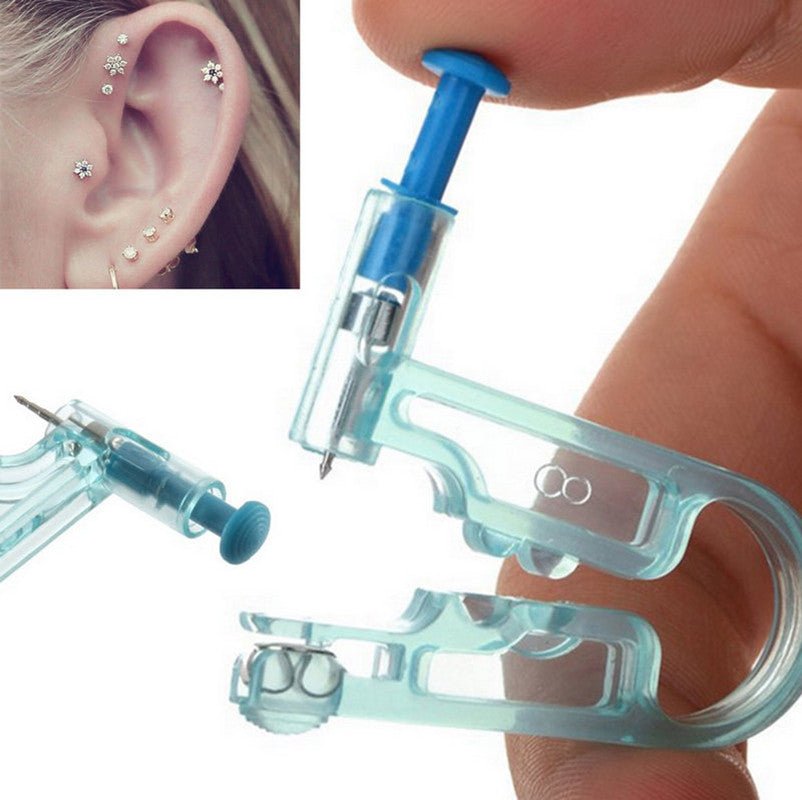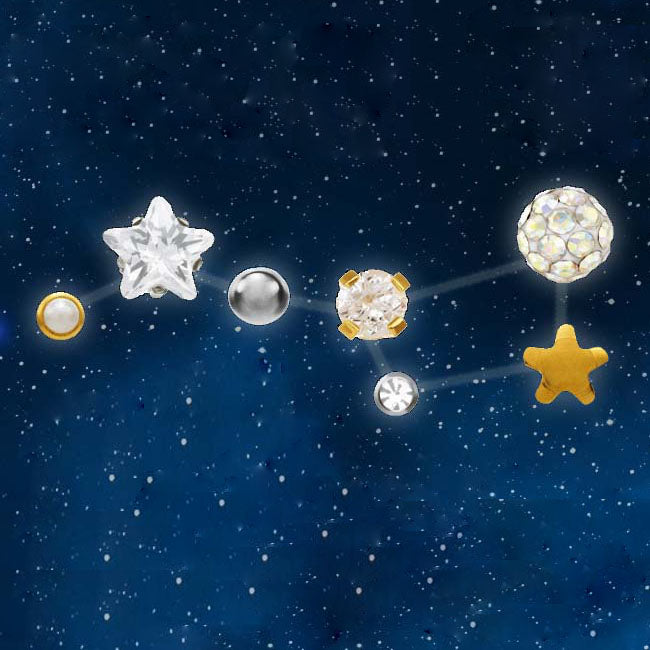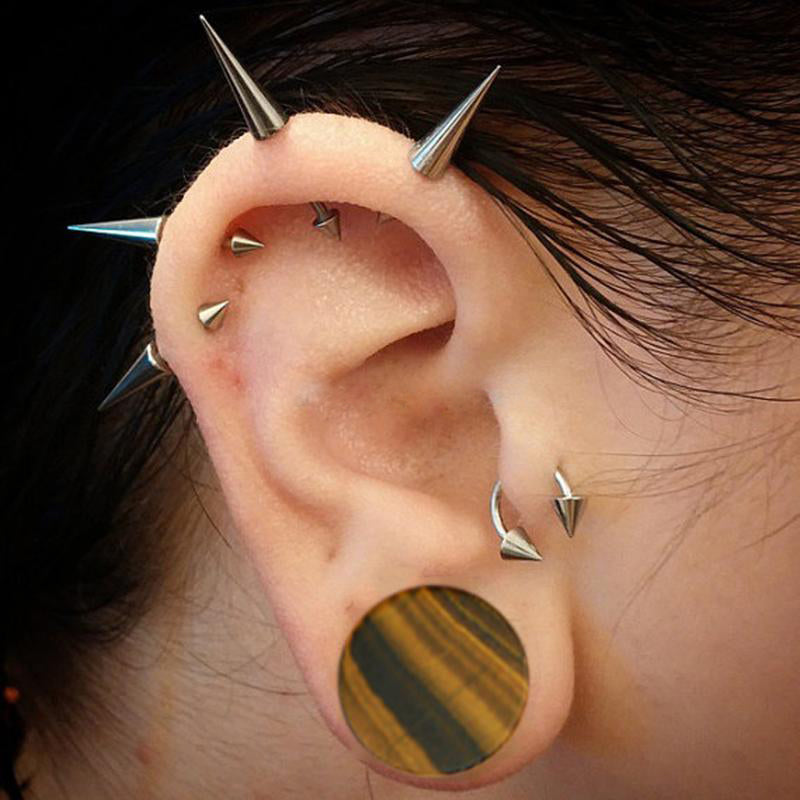
Piercing Tools
Many people only have the body piercing but they don’t know what tools are used for body piercings, now we will introduce the tools used in body piercing:
The Piercing Needle

The standard method in the United States involves making an opening using a beveled-tip hollow medical needle, which is available in different lengths, gauges and even shapes. While straight needles are useful for many body parts, curved needles are manufactured for areas where straight needles are not ideal. The needle selected is typically the same gauge (or sometimes larger as with cartilage piercings) as the initial jewelry to be worn, with higher gauges indicating thinner needles. The needle is inserted into the body part being pierced, frequently by hand but sometimes with the aid of a needle holder or pusher. While the needle is still in the body, the initial jewelry to be worn in the piercing is pushed through the opening, following the back of the needle. Jewelry is often inserted into the hollow end of a needle, so that as the needle pulls through the jewelry is left behind.
The Indwelling Cannula

Outside of the United States, many piercers use a needle containing a cannula or catheter, a hollow plastic tube placed at the end of the needle. In some countries, the piercing needle favoured in the United States is regarded as a medical device and is illegal for body piercers. The procedure is similar to the piercing needle method, but the initial jewelry is inserted into the back of the cannula and the cannula and the jewelry are then pulled through the piercing. More bleeding may follow, as the piercing is larger than the jewellery.
The Dermal Punch

A dermal punch is used to remove a circular area of tissue, into which jewelry is placed, and may be useful for larger cartilage piercings. They are popular for use in ears, though not legal for use by non-medical personnel in some parts of the United States.
The Piercing Gun

The vast majority of women in the west have their ears pierced with a piercing gun. The safety of piercing guns, which were originally developed for tagging livestock, has been disputed. The Department of Health of Western Australia does not recommend their use for piercing body parts other than the lobes of ears, and the Association of Professional Piercers recommends that piercing guns not be used for any piercing, requiring members to agree not to use piercing guns in their practice.
Forceps
Forceps, or clamps, may be used to hold and stabilize the tissue to be pierced. Most piercings that are stabilized with forceps use the triangular-headed "Pennington" forceps, while tongues are usually stabilized with an oval-headed forceps. Most forceps have large enough openings in their jaws to permit the needle and jewelry to pass directly through, though some slotted forceps are designed with a removable segment instead for removal after the piercing. Forceps are not used in the freehand method, in which the piercer supports the tissue by hand.
Needle Receiving Tubes

A hollow tube made of metal, shatter-resistant glass or plastic, needle receiving tubes, like forceps, are used to support the tissue at the piercing site and are common in septum and some cartilage piercings. Not only are these tubes intended to support the tissue, but they also receive the needle once it has passed through the tissue, offering protection from the sharp point. Needle receiving tubes are not used in the freehand piercing method.
Anaesthesia
Anaesthesia is supplied by some piercers, particularly in the United Kingdom and Europe. The anaesthesia may be topical or injected. Piercers and other non-medical personnel are not legally permitted to administer anaesthetics in the United States.



Leave a comment
This site is protected by hCaptcha and the hCaptcha Privacy Policy and Terms of Service apply.